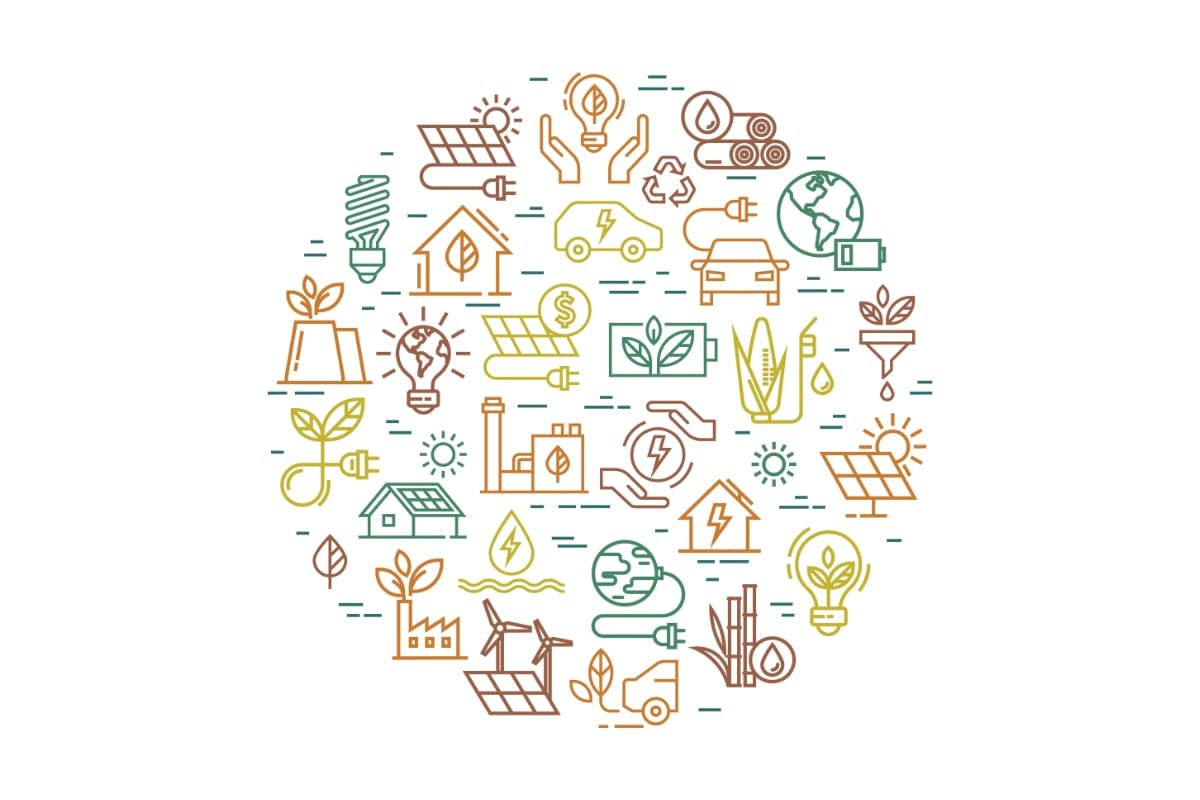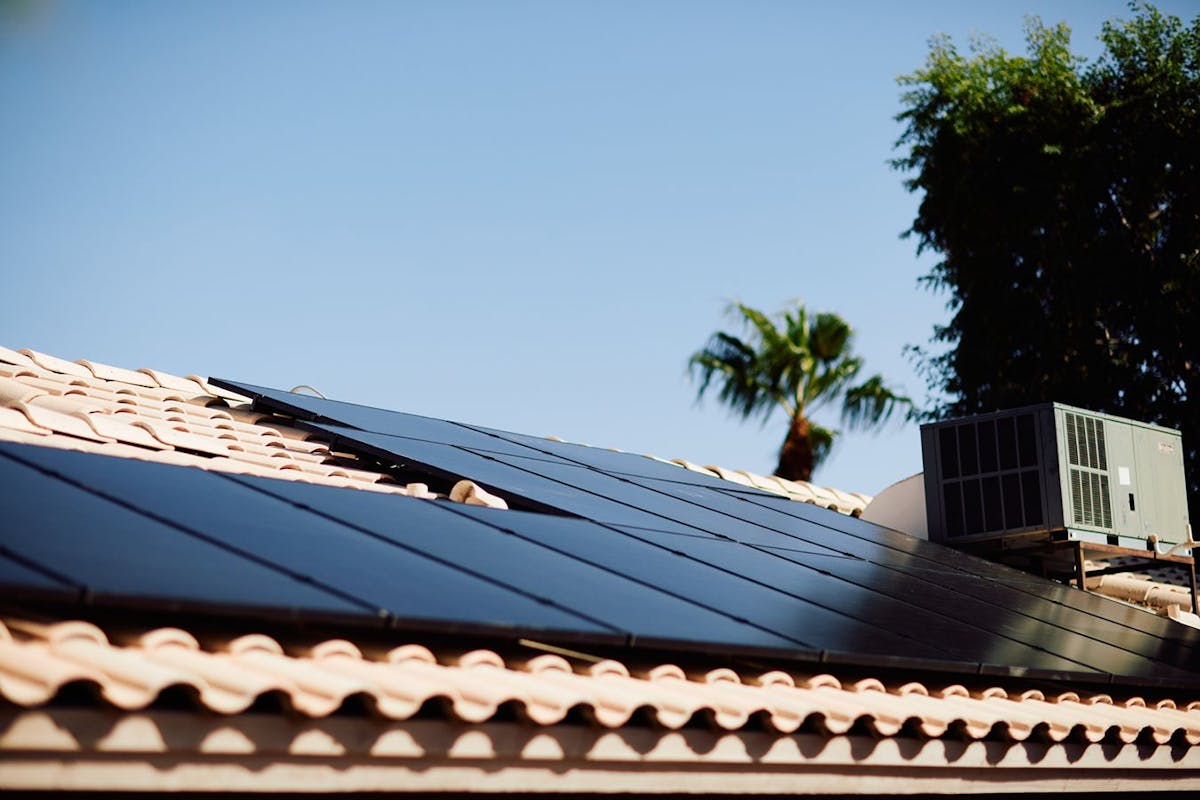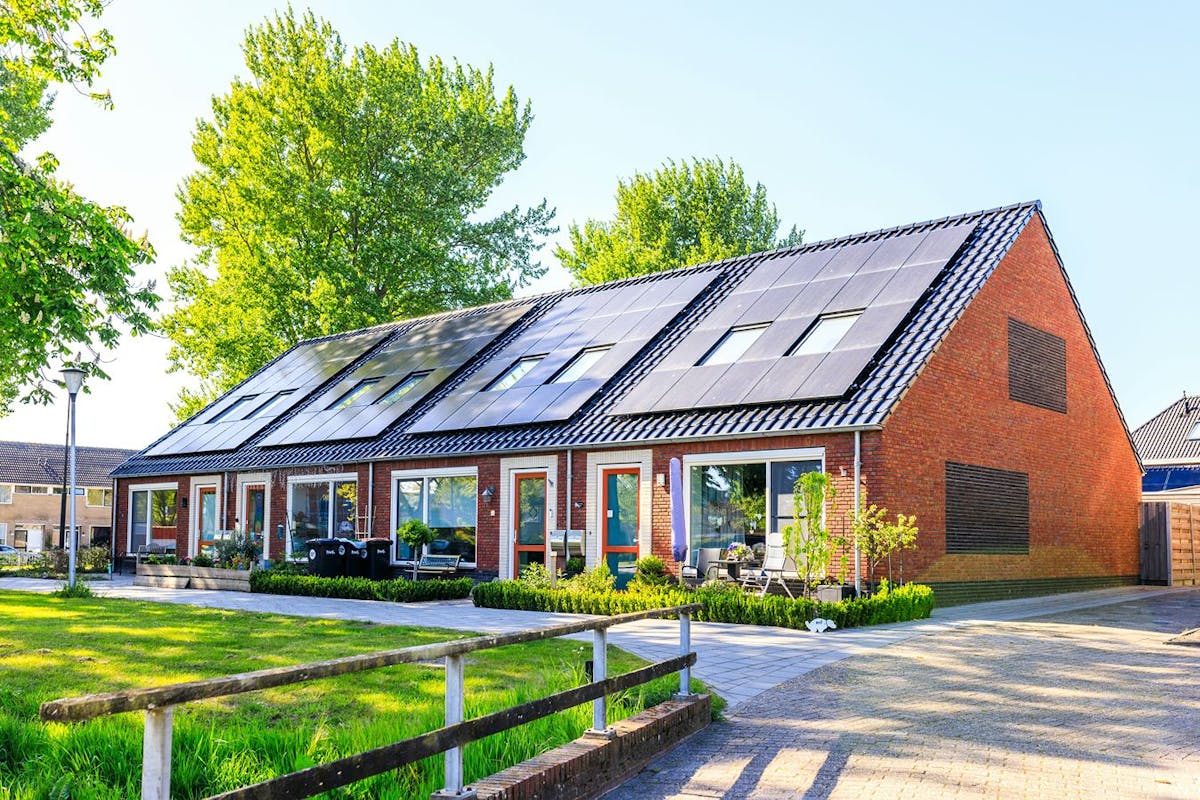The Difference Between Green Energy, Clean Energy, and Renewable Energy
Last edited

Author
Andrew Giermak
Solar and Electrification Writer and Editor

Editor
Andrew Blok
Electrification and Solar Writer and Editor

It’s easy to say green energy, clean energy, or renewable energy and pretty much mean the same thing. There are differences and distinctions, though, and different people may define the terms differently. For instance, someone might consider all green energy sources to be renewable, but not all renewable energy sources to be green green. Moreover, clean energy often encompasses nuclear energy, which is definitely not renewable.
It can be worth exploring these differences in learning about sustainable energy and addressing the challenges of climate change. We’ll help explain the similarities and differences between green, clean, and renewable energy sources.
See how much you can save with home energy changes
What Is Renewable Energy?
Renewable energy is any energy source that constantly replenishes itself over a relatively short time frame.
In theory, renewable energy is considered virtually inexhaustible, meaning the method used to produce electricity never runs out. This makes it a more viable long-term option compared to natural gas and coal, both of which are non-renewable resources that we have a finite supply of.
What Is Green Energy?
Green energy is often used to describe any form of energy that comes from natural sources, such as wind, sunlight, or water.
While green energy is renewable, not all renewable energy sources are considered green. For example, the construction of a large-scale hydropower facility can have a heavy environmental impact on nearby rivers and lakes. Even so, since green energy sources do not release significant amounts of greenhouse gases into the atmosphere during the generation of electricity, they are considered clean energy resources.
What Is Clean Energy?
Clean energy is any energy source that emits negligible pollution, greenhouse gases, or chemical contaminants.
The "clean" means these sources have minimal or zero impact on the surrounding environment, which makes them ideal for the long-term survivability of the planet.
Green, Clean, and Renewable Energy: How Are They Different?
These three terms — green, renewable, and clean energy — are often used interchangeably in eco-friendly content, but they don't always mean the same thing. While some overlap exists, the subtle differences and nuances can impact funding, allocation, and the creation of government credits during and after the production of these sustainable energy sources.
Thus, it’s important to understand that the true definitions of renewable, clean, and green energy regard how they’re created, how they’re refreshed, and their overall environmental impact.
Creation
- Renewable energy comes from sources that occur naturally and can be replaced naturally and completely within the span of an average human life.
- Green energy comes from natural sources that meet current energy needs without compromising future generations. It is a subset of renewable energy representing resources with the smallest environmental footprint.
- Clean energy releases zero or minuscule amounts of carbon dioxide and chemical contaminants during production. Although not necessarily renewable by definition, clean energy doesn't create large amounts of greenhouse gases or air pollutants.
Renewal
- Renewable energy sources never run out and are naturally replenished. However, renewable energy is flow-limited, meaning there is a limit to what can be captured over time (i.e. you can’t make more wind than what already exists).
- Green energy comes from renewable energy resources that can be renewed naturally and have the least environmental impact.
- Clean energy is created without emitting greenhouse gases, though it isn’t necessarily naturally renewable.
Impact
- Renewable energy can have an ecological impact, depending upon the process used to create that electricity.
- Green energy is considered the most environmentally friendly resource available to us today, with little to no ongoing environmental impact.
- Clean energy is power generation without creating adverse environmental impacts like carbon dioxide or greenhouse gases. Most clean energy sources are also renewable, including hydro energy, solar power, and wind power.
See how much you can save with home energy changes
Comparing Green, Clean, and Renewable Energy
Clean energy vs renewable energy
In theory, renewable energy is inexhaustible as it's a continuous energy source. However, renewable energy is not always clean, and that cleanliness depends on a given state or nation's laws and parameters for clean power.
For example, some renewable sources emit pollutants while staying within the threshold of a legal definition of "clean." The cleanest renewable sources are wind energy, geothermal energy, and solar energy.
However, while small hydro plants are renewable and clean, large hydroelectric plants emit some pollutants and can harm the environment during construction. Hence, they create renewable but not clean energy.
Clean energy vs green energy
Clean energy creates little or no emissions during creation, use, and regeneration. Green energy sources like biomass do release small quantities of pollution, often during creation and use.
Compared to fossil fuels, the greenhouse gases released during the creation of green energy aren’t that severe, even if they aren’t 100% “clean”. Due to the low amounts of greenhouse gases created during their use, green power doesn't threaten plant extinction or habitat loss.
Clean and renewable energy
This is the perfect combination: clean and renewable. These energy sources don’t create significant emissions during use and production, and they naturally renew themselves without human activity.
Wind and solar are both clean and renewable energy sources, so you don’t have to choose clean energy vs. renewable energy. Their supply cannot be depleted since the sun will always provide solar energy when it produces light, and wind will always turn wind turbines to create energy when it blows.
If you’re interested in learning more about the ways clean solar power can benefit your home, download the Palmetto app, start your account, and explore the benefits of saving or generating clean energy at home.
Other clean and renewable sources are geothermal and tidal energy, which are equally clean when the energy production doesn't emit pollutants.
The Difference Between Green, Clean, and Renewable Energy
Green, clean, and renewable energy are used to describe the sources of energy that help our planet and reduce our need for fossil fuels. However, they don’t all mean the same thing in terms of how the energy is created, used, and regenerated. It’s important to understand those differences so we can become more eco-friendly.
While the three terms have subtle differences, they represent the future of our planet’s energy supply as we fight climate change. Since no single energy source can meet all our needs, we need a combination of different green, clean, and renewable energy sources to generate electricity, especially in regions with limited quality and availability.
Technological advances means green, clean, and renewable energy sources are poised to become more affordable and more efficient over time.
Ultimately, creating a zero-emission world requires everyone to adopt green energy solutions that have a positive environmental impact. One easy way you can make a positive impact is via the Palmetto app. In the app, you can learn about saving energy and earn discounts in the app’s shop for energy-saving and cost-saving products.
Ready to join the New Utility Revolution? You can learn more about your home’s energy and estimated savings with our solar savings tool and Savings Maximizer.
See what home electrification can do for you:
Frequently Asked Questions
What’s the difference between green, clean, and renewable energy?
How green energy, clean energy, and renewable energy are defined is about how the energy is created, whether the power source is limited or can be refreshed, and each one’s environmental impact. Green energy is renewable and causes no or very minimal environmental impact. Clean energy releases no greenhouse gas or pollutants. Renewable energy comes from self-regenerating or infinite sources.
Is solar energy renewable?
Solar energy is a naturally renewable and effectively infinite power source. It is also clean and generates electricity without carbon emissions or other pollutants.


